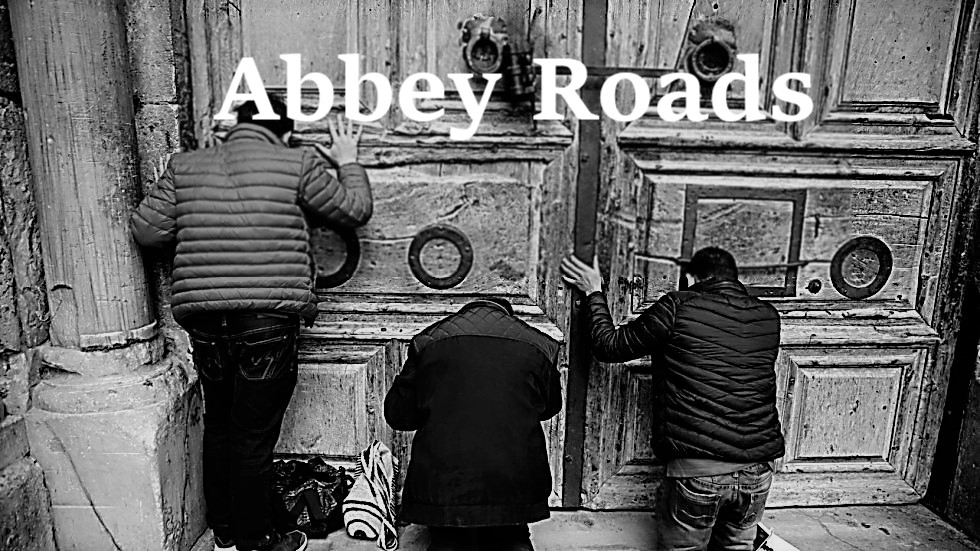While on the subject of the Archbishop Weakland memorial...
.
Kitsch is not just something second rate Catholic retailers sell, or the unholy images we place in our churches. I found the following on The Lion and the Cardinal - one of the better blogs online BTW. The brief excerpt may help to understand why many of us become so uncomfortable with what Catholic popular culture often mistakes for piety, liturgy, art, and authentic spirituality.
.
On KITSCH
-Roger Scruton:
.
Kitsch, as I see it, is a religious phenomenon - an attempt to disguise the loss of faith, by filling the world with fake emotions, fake morality and fake aesthetic values....
.
Faith exalts the human heart, by removing it from the market-place, making it sacred an unexchangeable. Under the jurisdiction of religion our deeper feelings are sacralized, so as to become raw material for the ethical life: the life lived in judgment. When faith declines, however, the sacred is unprotected from marauders; the heart can be captured and put on sale. When this happens the human heart becomes kitsch. The clichéd kiss, the doe-eyed smile, the Christmas-card sentiments advertise what cannot be advertised without ceasing to be. They therefore commit the salesman to nothing; they can be bought and sold without emotional hardship, since the emotion, being a fantasy product, no longer exists in its committed and judgment-bearing form.
.
Much of our present cultural situation can be seen as a response to this remarkable phenomenon - never, I think, encountered before in history. Kitsch reflects our spiritual waywardness, and our failure, not merely to value the human spirit, but rather to perform those sacrificial acts which create it. Nor is kitsch a purely aesthetic disease. Every ceremony, every ritual, every public display of emotion can be kitsched - and inevitably will be kitsched, unless controlled by some severe critical discipline... Think of the Disneyland versions of monarchical and state occasions which are rapidly replacing the old stately forms...
.
It is surely impossible to flee from kitsch by taking refuge in religion, when religion itself is kitsch. The modernisation of the Roman Catholic Mass and the Anglican Prayer Book were really a kitschification: and attempts at liturgical art are now poxed all over with the same disease. The day-to-day services of the Christian churches are embarrassing reminders of the fact that religion is losing its sublime godwardness, and turning instead towards the world of mass production. And surely Eliot was right to imply that we cannot overcome kitsch through art alone: the recovery of the tradition is also a reorganisation of our lives, and involves a spiritual as well as an aesthetic transformation.
[Modern Culture by Roger Scruton. Continuum International Publishing Group. 2007] - Source
.



"religion is losing its sublime godwardness, and turning instead towards the world of mass production"
ReplyDeleteQuite so. While Catholic Kitsch is somewhat different than its separated brethren forms (which I know only too well) it exists none the less.
Oh, I whole heartedly agree kitch can be nauseating--does not spur the mind and soul towards Heaven. Beautiful statues and art can help elevate the mind and heart, while kitch, well, if it comes to me--ends up in the trash.
ReplyDeleteWhat, no affection for the BVM who glows in the dark? I wholeheartedly agree.
ReplyDeleteI have a glow in the dark crucifix. I'm not proud but I do like it.
ReplyDeleteI suppose I could devote several posts to this subject but it isn't that everything plastic or inexpensive or mass produced is bad - nor is all kitsch bad. The weeping image of the Madonna of Syracuse is a prime example. At one time the art world regarded mexican retablos as kitsch and now they are pricey works of art - yet they were always sincere images of devotion.
ReplyDeleteThe first photo on this post points to a more disturbing embrace of kitsch by the huggy-feelie spiritualities dissidents often embrace, with their drums and feathers and fetishes and self-centering praise events.
"Kitsch", in my mind, is the emotional consolation in a religious sense, with no real content.
ReplyDeleteThe iconographic tradition has always held that even "poorly" done icons have sometimes been the source of miracles, not because of its depiction, but because of the faith and holiness of the iconographer.
If we just want to "feel good", as opposed to being lead deeper into union with God, accepting our sufferings, loving our brethren, then "kitsch" is what we will settle for.